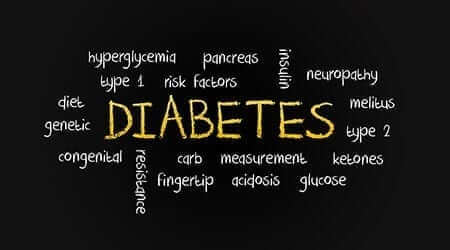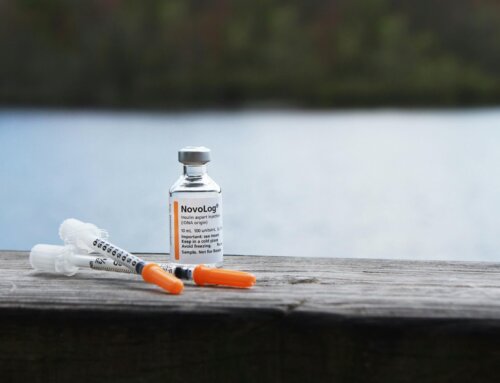
According to the National Institutes of Health, the rate of pre-diabetes has climbed to 86 million Americans over the age of 20 in 2012. 51% of those people are over the age of 65. Just two years ago in 2010, the rate was 79 million. This huge rise is also evident in people developing diabetes type 2. Unfortunately not all insurance plans cover education or management skills classes for pre-diabetes including Medicare and Medicare Advantage plans even though the rate is extremely high in seniors. It makes sense to educate everyone with pre-diabetes since over half of those will progress to diabetes type 2 if lifestyle changes are not made. Let’s review what pre-diabetes is and ways to reduce the risk of developing diabetes type 2.
- What is pre-diabetes? People with pre-diabetes may exhibit symptoms similar to those of type 2 diabetes, although many people have no symptoms. Symptoms to look for and report include: increased thirst, increased urination, fatigue, slow healing wounds, increased hunger, and blurry vision.
- How do you test for pre-diabetes and what are the values? Testing for pre-diabetes is similar to testing for diabetes, although the number values are different. A fasting blood glucose value for pre-diabetes is 100-125 mg/dl. Diabetes is diagnosed at 126mg/dl or more. A second method is using an A1C blood test which is a 3 month average. Pre-diabetes is diagnosed at 5.7-6.4% and diabetes is diagnosed at 6.5% or greater. A third test called OGTT, or the oral glucose test, is used. You have your blood sugar drawn after fasting and drink 75grams of a glucose solution. Your blood is drawn at 1 hour and 2 hours intervals. Pre-diabetes is diagnosed when the blood sugars are over 140mg/dl and less than 200mg/dl. The point is that pre-diabetes is just a single number away from diabetes type 2 and should be taken seriously. Research has shown that people with pre-diabetes are at increased risk of cardiovascular disease, just as those people with diabetes type 2.
- What are the risk factors of pre-diabetes? They are all similar to those risk factors of diabetes type 2 including: a family history, a sedentary or inactive lifestyle, being over weight, being over 40 or being an Islander, Hispanic, African American or Pima Indian. According to the Diabetes Prevention trials that have been ongoing for years, lifestyle changes can reduce the risk of developing diabetes type 2 from pre-diabetes by 51%. Adding Metformin alone decreases the progression by 30%. We need to take pre-diabetes seriously!
- What can be done to reduce the risk of progressing pre-diabetes to diabetes type2? Working as a diabetes educator in a self-management skills program I am often asked “if I had made changes when I was told about pre-diabetes, could I have prevented diabetes?” Well, we know that there are no guarantees, but these tips could better your overall health and keep your risk of developing diabetes down. Even if you have already developed diabetes, these tips can give you improved control.
- Why exercise? Exercise increases the body’s sensitivity to insulin, which helps regulate blood sugars and decrease insulin resistance – which is one of the main reasons for diabetes type 2. Exercise actually helps reduce blood sugars by opening the cell doors and allowing glucose into the cell to give it energy and leave the blood stream. Exercise helps you regulate your weight, which is a huge risk factor in developing diabetes type 2. For full benefits you should combine aerobics, walking, biking, and swimming for 30 minutes at a time, 5 days a week, with resistance or weight training 2-3 times a week for 30 minutes. Resistance training builds muscle and increases your metabolic rate.
- Eat fiber. The average American eats 10 grams of fiber a day. The recommended amount is 25-30 grams per day. Fiber helps keep you satiated longer and keeps cravings down. Fiber reduces your risk of heart disease while also lowering blood pressure and cholesterol levels. Foods with fiber take longer to break down, which helps prevent a quick rise in blood sugars. Start slowly and add fiber gradually or you may suffer from bloating and gas. Make sure to drink plenty of water as well. Eat the skin of apples and potatoes as an added source of fiber. Include Brussel sprouts, cabbage, broccoli, cauliflower, beans, oats and barley (in portion size), nuts, and seeds. Eat tangerines which contain a flavonoid called Nobiletin, which may reduce the risk of metabolic syndrome. Talk to your health care provider about adding a fiber supplement like Metamucil if you do not eat fruits or vegetables. Eat grapefruit (if you are not on a statin) and fresh cranberries, which will help decrease bacteria that stick to your teeth and bladder along with adding fiber.
- Whole grains over refined grains. Whole grains have more fiber and take time to get into your blood stream as compared to refined foods. This keeps the blood sugar from rising too quickly. Watch out for foods you think are healthy by reading labels. The first ingredient on the label is the highest amount in the food. For example, most people think spinach wraps are high in fiber but they are mainly refined and have very little spinach. Whole grain is not about the color. Often caramel coloring is added to white bread to make it look like whole wheat – so read those labels.
- Lose between 5-10% of your body weight. It may sound overwhelming, but modify your eating habits and add exercise. Do not rely on just one behavioral change. Do not go on a “diet”. Make a change in how you eat for the rest of your life. Have a bite if you have a craving, make only one trip to the buffet, eat slowly, watch portion sizes, eat a variety of foods, limit carbohydrates – but do not eliminate them. Have snacks ready to go and carry them with you. Try to stick to 50-100 calorie snacks, which may save you from eating too much during your next meal. Have a food plan and write down your intake in a food diary. Most people are surprised to see how much they actually eat and that it all adds up. Stay away from fried foods and bake in the oven with a drop of olive oil spray. Cut up vegetables – including cucumbers, red peppers, and water chestnuts – for crunch. Include egg whites, air popped pop corn and apples. Eat a smart bedtime snack of a protein and a carbohydrate. Use salsa, low fat Greek plain yogurt and avocados in place of bacon, sour cream, and cheese on potatoes. Bake kale chips or pumpkin seeds in the oven. Eat on a schedule and do not skip meals. Do not go longer than 5 hours between meals. Eat protein at every meal, which stimulates a natural appetite suppressant called cholecystokinin. Omit drinks with calories except for low fat milk. Drink more water. Avoid foods with high fructose corn syrup. This sweetener is hidden in many foods including packaged, boxed, wrapped foods, and frozen dinners. Chew sugar-free gum. Brush your teeth often to get a fresh taste in your mouth or swish with mouthwash. Start a meal with a soup, salad, or fruit to take the edge off hunger. Use sugar substitutes in moderation to battle sweet cravings.
- See your physician on a yearly basis or as recommended. This month alone I have educated at least 12 patients who had pre-diabetes and were not followed by a physician for years. When they finally did make an appointment, they had developed diabetes.
These hints may assist you in reducing your risk of developing diabetes type 2 if you have pre-diabetes. They will certainly help you control blood sugars if you already have type 2.
Good luck!
NOTE: Consult your Doctor first to make sure my recommendations fit your special health needs.












Leave A Comment